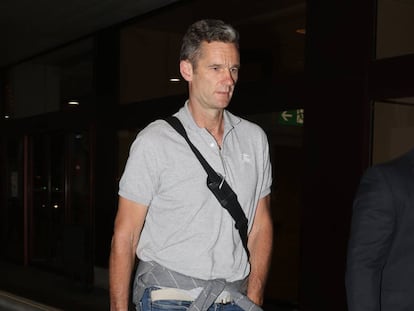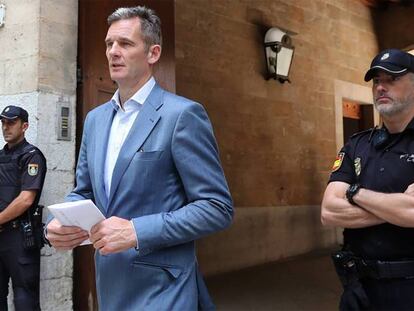Spanish king’s brother-in-law, jailed in graft case, gets first prison visit
Princess Cristina de Borbón flew in from Geneva to spend 40 minutes with Iñaki Urdangarin
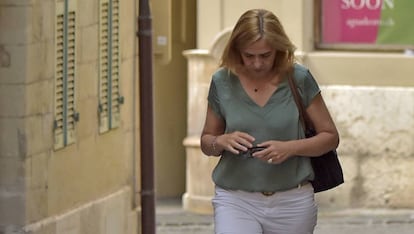
Princess Cristina de Borbón, sister to King Felipe VI of Spain, made her first visit to her jailed husband Iñaki Urdangarin on Sunday of last week.
Urdangarin had reported to a penitentiary in Brieva (Ávila) six days earlier to start serving a sentence of five years and 10 months in connection with a graft case known as Nóos.
Urdangarin is getting regular visits from a psychologist who is assessing his condition
Prisoners are allowed to receive their first visit a week after being incarcerated, and reporters were stationed around Brieva in the hopes of getting a glimpse of Cristina de Borbón, who was expected to fly in from the family residence in Geneva, Switzerland.
Even so, Urdangarin’s wife was so discreet that journalists failed to notice her as she walked into Brieva, a women’s prison that has a small, previously empty, module for male prisoners. Prison authorities said that so far, she is the only visitor that Urdangarin has had.
The former duke of Palma is doing time for embezzlement, influence peddling and tax crimes in a case named after the Nóos Institute, a not-for-profit foundation that he and a business partner used to secure no-bid contracts from the regional governments of Valencia and the Balearic Islands using Urdangarin’s influence.
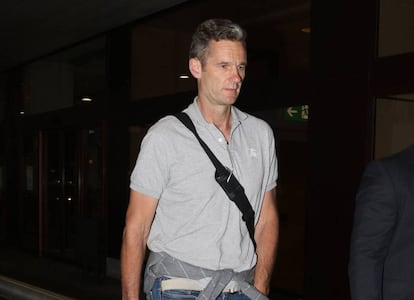
Urdangarin and Diego Torres also used their non-profit to divert around €6.2 million from public contracts secured for organizing sports events into private accounts.
Journalists miss visitor
Part of the reason that reporters were thrown off the scent is that Cristina de Borbón came to see her husband outside regular visiting hours. Prison sources said that this is accepted in some cases.
Just hours earlier, she had been seen on the streets of Geneva in the company of Urdangarin’s mother, Claire Liebaert, her own sister Princess Elena, her four children and other relatives. The occasion was the graduation of her son Pablo from the École Internationale de Genève, which the family celebrated at the luxury hotel Four Seasons des Bergues Geneva.
The event had been planned for a long time and the family decided to go ahead with it despite the fact that Urdangarin would not be able to attend.
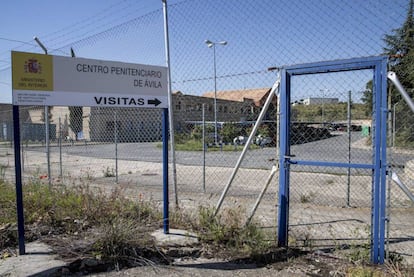
The king’s brother-in-law requested the Brieva penitentiary because of its proximity to Madrid, making it easier for his wife to fly in for visits, and because of its privacy, as he is serving time inside the men’s module, which only contains five cells and currently has no inmates other than himself. He has the right to watch television and access to a no-frills gym and a tiny courtyard.
But witnesses who saw him walk in on his first day said that Urdangarin broke down when he saw his new “home.” Prison authorities are already concerned about the impact of this isolation on his mental health. An earlier celebrity inmate who did time here, former Civil Guard chief Luis Roldán, said that it was the constant solitude that saw him end up needing specialized assistance.
Urdangarin is getting regular visits from a psychologist who is assessing his condition and who will determine whether any changes need to be made to his regime. In these two weeks, he is reported to have turned to religion as a refuge.
Urdangarin comes from a deeply religious family from Álava, in the Basque Country, and in recent months he had given signs of getting closer to the Church than he had in years. In the first week of January, the family flew to the Vatican and he met briefly with Pope Francis. Inside his cell, Urdangarin keeps a Bible and an image of La Virgen Blanca, a depiction of the Virgin Mary that is considered to be the patron saint of Vitoria, the capital of Álava.
English version by Susana Urra.
Tu suscripción se está usando en otro dispositivo
¿Quieres añadir otro usuario a tu suscripción?
Si continúas leyendo en este dispositivo, no se podrá leer en el otro.
FlechaTu suscripción se está usando en otro dispositivo y solo puedes acceder a EL PAÍS desde un dispositivo a la vez.
Si quieres compartir tu cuenta, cambia tu suscripción a la modalidad Premium, así podrás añadir otro usuario. Cada uno accederá con su propia cuenta de email, lo que os permitirá personalizar vuestra experiencia en EL PAÍS.
¿Tienes una suscripción de empresa? Accede aquí para contratar más cuentas.
En el caso de no saber quién está usando tu cuenta, te recomendamos cambiar tu contraseña aquí.
Si decides continuar compartiendo tu cuenta, este mensaje se mostrará en tu dispositivo y en el de la otra persona que está usando tu cuenta de forma indefinida, afectando a tu experiencia de lectura. Puedes consultar aquí los términos y condiciones de la suscripción digital.
More information
Archived In
Últimas noticias
Maduro pleads not guilty before the federal court in New York: ‘I am still the president of Venezuela’
A new test can detect Alzheimer’s from a finger prick
UN team enters Sudanese city of El Fasher after paramilitary massacre: ‘It’s like a ghost town’
A recipe for resistance: Indigenous peoples politicize their struggles from the kitchen
Most viewed
- Gilles Lipovetsky: ‘If you want to live better and fall in love, take Prozac, don’t look to philosophy’
- Alain Aspect, Nobel laureate in physics: ‘Einstein was so smart that he would have had to recognize quantum entanglement’
- Alvin Hellerstein, a 92-year-old judge appointed by Bill Clinton, to preside over Maduro’s trial in New York
- Why oil has been at the center of Venezuela-US conflicts for decades
- Cuba confirms death of 32 of its citizens in the US attack against Venezuela

